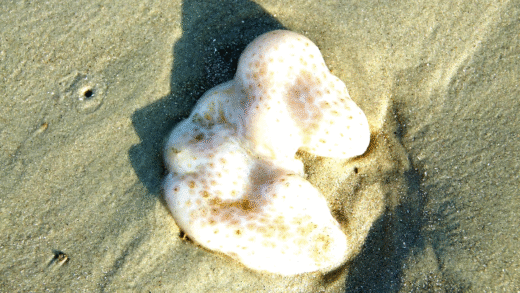Spider egg sacs are vital for reproduction, providing safety for eggs. They use silk for protection, camouflaging them from predators. Various types exist, with unique adaptations to enhance survival. Hatching times vary based on environmental factors. Maternal care is crucial, as mothers defend and nurture their young. Environmental conditions significantly impact egg development, while numerous predators threaten their survival. Unique reproductive habits add to spider resilience.
Understanding Spider Egg Sacs: What Are They?
Spider egg sac is a crucial component of arachnid reproduction. These sacs serve as protective containers for spider eggs, ensuring their safety during development. Typically, a mother spider produces one or more egg sacs, which can vary in size and shape depending on the species. The primary function of an egg sac is to shield the vulnerable eggs from environmental hazards and predators.
Spider egg sacs are often made from silk, which the mother spider spins with incredible precision. This silk not only protects the eggs from physical threats but also helps maintain a stable environment. Inside the sac, the eggs develop in a controlled atmosphere, minimizing the risk of desiccation or damage from external factors.
In summary, spider egg sacs are vital for successful reproduction, acting as a nursery that fosters the growth of spiderlings until they are ready to emerge into the world.
How Do Spider Eggs Stay Safe from Predators?
Spider eggs are particularly vulnerable to predation, but they possess several ingenious adaptations to enhance their safety. First, the construction of the spider egg sac itself plays a significant role in protection. The silk used to create the sac is often tough and difficult for predators to penetrate, providing a solid barrier between the eggs and potential threats.
Additionally, many spider species choose hidden or camouflaged locations for their egg sacs. This strategic placement helps to avoid detection by hungry insects, birds, and other animals that might view the eggs as a tasty snack. For example, some spiders attach their sacs to the undersides of leaves or in crevices where they blend seamlessly with their surroundings.
Moreover, the maternal care provided by female spiders enhances the safety of their eggs. Some mother spiders guard their egg sacs vigilantly, actively defending them against intruders. This behavior is especially common in species where the female remains close to the sac until the eggs hatch.
In conclusion, spider eggs utilize a combination of physical defenses, strategic placement, and maternal care to enhance their survival against predators.
Different Types of Spider Egg Sacs
Spider egg sacs come in various shapes and structures, reflecting the diversity of spider species. Generally, these sacs can be categorized into several types based on their appearance and construction materials.
- Round or Ovoid Sacs: Many common spiders, such as orb-weavers, produce round or oval-shaped egg sacs. These are typically smooth and well-formed, providing excellent protection.
- Flat Sacs: Some species, like the wolf spider, create flatter sacs that can easily blend into their environment, enhancing camouflage.
- Fuzzy or Hairy Sacs: Certain spiders produce egg sacs covered in fine silk or hair-like structures, which can deter predators by making the sac appear less palatable.
Each type of spider egg sac serves a unique purpose and is adapted to the specific needs of the spider species. For instance, the shape and texture can influence how effectively the sac camouflages and protects the eggs within.
In summary, the diversity of spider egg sacs illustrates the remarkable adaptability of spiders in their reproductive strategies.
Hatching Time: How Long Do Spider Eggs Take to Hatch?
Spider eggs have a specific incubation period before they hatch, which can vary significantly depending on the species and environmental conditions. Typically, spider eggs take anywhere from a few weeks to several months to hatch. Factors such as temperature, humidity, and the presence of predators can greatly influence this timeline.
For example, in warmer climates, spider eggs might hatch within two to three weeks. In contrast, eggs laid in cooler environments may remain dormant for longer, sometimes up to six months. This adaptability allows spiders to synchronize their hatching with favorable conditions for survival.
In summary, the hatching time of spider eggs is a fascinating aspect of their reproductive strategy. Understanding this period helps us appreciate the delicate balance between environmental factors and the survival of spiderlings.
First Impressions: What Do Spiderlings Look Like When They Emerge?
When spiderlings emerge from their spider egg sacs, they are often tiny replicas of their adult forms, but with some noticeable differences. Generally, newborn spiders are small, measuring just a few millimeters in length. They typically have a soft, pale exoskeleton that hardens over time.
Upon emergence, spiderlings may exhibit a variety of colors and patterns, depending on the species. For instance, some may be brown or gray, while others might showcase vibrant hues. Their appearance can serve as a form of camouflage, helping them evade predators during their vulnerable early days.
In many cases, spiderlings will remain in a communal area near the egg sac for a short period, often forming a small cluster. This grouping can provide added protection from predators. Overall, the initial appearance of spiderlings is both intriguing and critical for their survival in the wild.
Mother Spider Care: How Do They Look After Their Eggs and Spiderlings?
Mother spiders display remarkable care for their eggs and spiderlings. After laying the eggs, the female often remains close to the spider egg sac, guarding it against potential threats. This protective behavior is particularly evident in species like wolf spiders, where the mother actively defends the sac until the eggs hatch.
Once the spiderlings emerge, many mothers continue to provide care. They may stay with the spiderlings for several days, offering protection and guidance as the young spiders learn to navigate their surroundings. In some cases, the mother will even share food with her young, ensuring they have the necessary nutrients to grow.
In summary, maternal care in spiders is a vital aspect of their reproductive strategy. The commitment shown by mother spiders significantly increases the chances of survival for their offspring, showcasing the intricate behaviors of these fascinating creatures.
Interesting Facts About Spider Reproduction
Spider egg sacs reveal some fascinating aspects of spider reproduction. One unique fact is that certain spider species engage in a behavior called sexual cannibalism, where the female may consume the male after mating. This might seem harsh, but it can provide nutritional benefits to the female, ensuring she has enough energy to produce healthy eggs.
Additionally, some spiders exhibit polyandry, where females mate with multiple males. This behavior increases genetic diversity among offspring, enhancing their chances of survival. Another interesting aspect is that many species have specialized mating rituals, which can include elaborate dances or specific web structures to attract mates.
Furthermore, some spiders can produce multiple egg sacs in a single season, allowing for a higher number of offspring. For instance, a single female orb-weaver can lay up to 1,000 eggs in one sac. This reproductive strategy highlights the incredible adaptability of spiders in ensuring their lineage continues.
Environmental Factors Affecting Spider Egg Development
Spider egg development is significantly influenced by environmental factors. Temperature is a crucial element; warmer conditions typically accelerate development, while cooler temperatures can prolong the incubation period. For example, spider eggs in a warm climate may hatch in just a few weeks, whereas those in colder areas might take several months.
Humidity also plays a vital role. High humidity levels can help maintain the moisture within the spider egg sac, preventing desiccation and promoting healthy growth. Conversely, low humidity can lead to eggs drying out, making them more vulnerable to predators.
Moreover, the presence of predators in the environment can impact egg development. If a mother spider senses danger, she may choose to delay laying her eggs until conditions are safer, ensuring a higher survival rate for her offspring. Thus, understanding these environmental influences is crucial for appreciating the delicate balance that affects spider reproduction.
Common Predators of Spider Eggs
Spider eggs face numerous threats from various predators. Common predators include insects, birds, and small mammals that view spider eggs as a nutritious snack. For example, certain wasps are known to specifically target spider egg sacs, laying their own eggs inside them and using the spider eggs as food for their larvae.
Other predators can include larger spiders, which may consume the eggs of smaller species. Additionally, environmental hazards like mold and fungi can also pose risks to spider eggs, leading to decreased survival rates.
To combat these threats, many spiders employ strategies such as producing multiple egg sacs and choosing concealed locations for their nests. By understanding the common predators of spider eggs, we gain insight into the challenges these creatures face and the adaptations they have developed to ensure their survival.





Comments are closed.